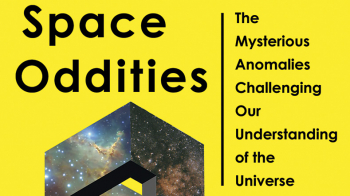
In 1609 Galileo Galilei made the first recorded telescope observations of the night sky – an event that is being celebrated all through 2009 in the International Year of Astronomy. He soon ran into trouble with the ecclesiastical authorities, partly because he used Italian instead of Latin in many of his letters and books, which gave people access to his new scientific interpretation of the world. Fortunately things have changed since then and today the scientific community and the relevant authorities on scientific policies share a general consensus on the importance of conveying to society the main results and general consequences of research.
Take high-energy physics as an example: over the past few years, dedicated working groups and projects have been set up to develop outreach activities. A good example of an annual activity of this kind, aimed at young students in physics and high-school teachers, is the EPPOG Masterclasses, which involves the participation of some 80 research institutes and universities across Europe. Recently several African and American institutes joined the project.
Permanent or travelling exhibitions are another interesting means for the “large-scale” dissemination of high-energy physics information, showing the public the still-unresolved mysteries of the universe and the gigantic equipment needed in particle accelerators (such as the LHC), detectors and computing systems (such as the Grid).
These valuable initiatives have been unquestionably successful but their real reach to society is limited because of the relatively reduced number of participants and the competition from other fields (scientific or not) already on the market, such as websites, video games and so on. We can think of taking advantage of these more loosely related activities such as the film adaptation of Dan Brown’s bestselling novel, Angels & Demons, currently in cinemas around the world. While artists should be allowed creative freedom and their view on science should not be rejected, they sometimes risk being somewhat misleading. I am not particularly enthusiastic about spreading the idea that a bomb made of antimatter stolen from CERN could destroy the Vatican (or any other city). Nonetheless, the association of physics (and more generally, science) with other social and cultural manifestations should be mutually beneficial and deserves closer attention.
Despite the universality of its principles, methodology and objectivity of results, the advancement of scientific knowledge has proved to be socially dependent, from the golden age of Pericles and the “invention” of democracy to the Renaissance and the rise of humanism together with the birth of modern science. Society itself may fuel scientific advancement in a particular direction: thermodynamics was driven by the need for building more efficient heat engines at the beginning of Industrial Revolution, thereby decisively contributing to the foundations of classical physics in the 19th century.
As an example from particle physics, CERN was created as a free forum for nuclear science in a Europe devastated by the Second World War “to encourage the formation of research laboratories in order to increase international scientific collaboration&ellip;” (as stated at the Fifth UNESCO Conference in Florence, 1950). The CERN convention was gradually ratified during 1953–54 by the 12 founding member states, while the Treaty of Rome that founded the European Union was signed in 1957. Science often goes ahead of society.
In this regard the Web – born at CERN – has represented a dramatic democratization of knowledge, teaching and information. Virtually free for everybody on the planet (wherever electricity is available), it was an almost direct consequence of the free circulation of scientific data among researchers. More generally, big scientific collaborations are genuine examples of worldwide co-operation between different scientists and technicians regardless of their age, gender, religious beliefs or nationality.
Social needs, in turn, continuously demand technological achievements that ultimately stem from fundamental research. Nuclear and particle physics, for instance, have provided crucial tools for medical diagnosis, from the discovery of X-rays to modern medical-imaging techniques.
Undoubtedly outreach must convey to society the excitement of scientific discovery and the importance of technological returns. However, in my opinion, the message from science should not stop there. Galileo’s Sidereus Nuncius (Sidereal Messenger) was heralding in 1610 not only the existence of mountains on the Moon or satellites around Jupiter, but also the dawn of a new epoch. Indeed, the social impact and controversy turned out to be much greater than with De revolutionibus by Nicolaus Copernicus (1543) or Johannes Kepler’s Astronomia nova (1609) – because it was easier to read.
We are currently witnessing crucial developments of society globally, from a more just economy to extended human rights, environmental protection and nature conservation. While keeping the possible misuse of scientific and technological applications in mind as a warning, we should ensure that the virtues that are traditionally associated with “Big Science”, historically entangled in the social progress of humanity, are praised as an example to counteract ignorance, obscurantism and fanaticism.








